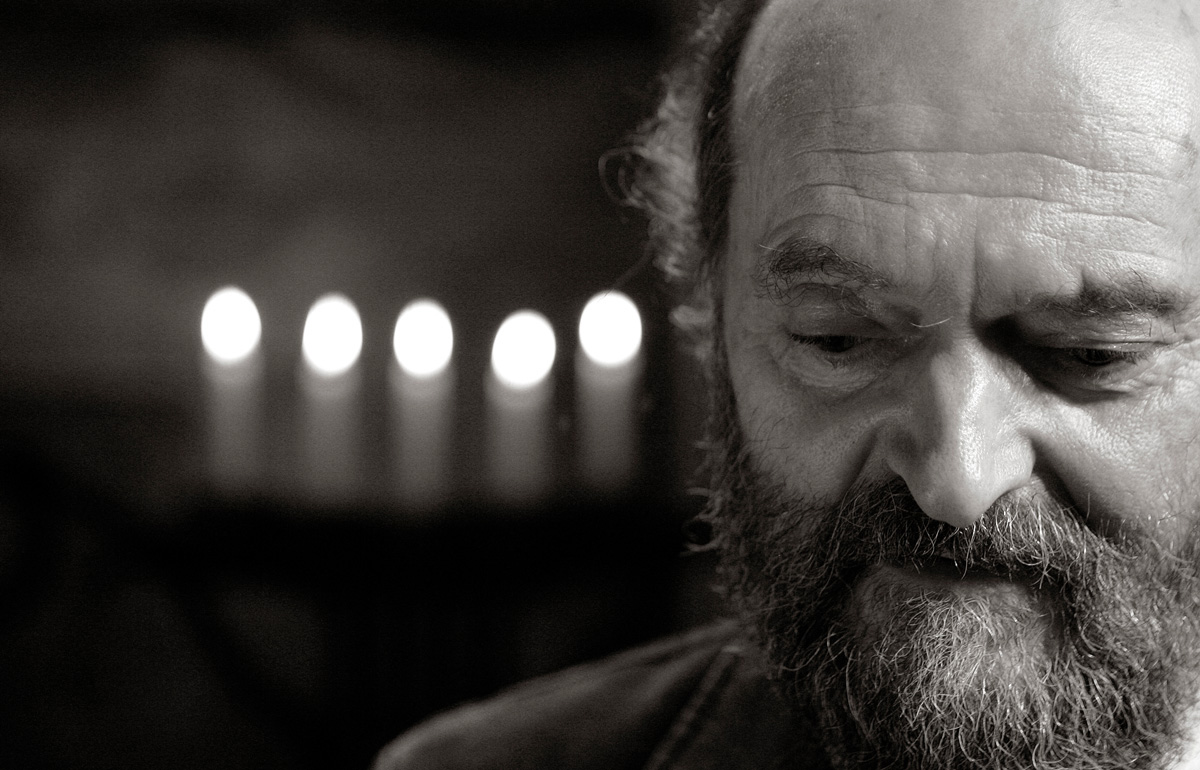Arvo Pärt’s Credo, written in 1968, is the music of revolution. It’s an expression of disintegration, collapse, and reawakening. It’s a piece in which the pristine, well established order of modernism’s 12-tone-row and the rational counterpoint of J.S. Bach, give way to a terrifying, chaotic, total breakdown. For a moment we hear raging noise…an anguished sound world unimaginable before the twentieth century. Scored for piano, orchestra and chorus (an instrumentation that mirrors Beethoven’s Choral Fantasy, Op. 80), Credo is a setting of the religious affirmation, “I believe in Jesus Christ.” The following lines are from Matthew 5:38-39: “Ye have heard that it hath been said, An eye for an eye, and a tooth for a tooth: But I say unto you, That ye resist not evil.”
As a composer living amid the gloom of Iron-Curtain-shrouded Estonia, Pärt was experiencing his own creative breakdown by the late 1960s. The complex serialism of his preceding works, such as Nekrolog, Op.5 (1960) and Symphony No. 1, Op. 9, ‘Polyphonic’ (modernist music which found him at odds with the Soviet authorities), led to a creative dead end. Credo was the final piece Pärt completed before entering eight years of compositional silence. In his biography of Pärt, Paul Hillier writes,
He had reached a position of complete despair in which the composition of music appeared to be the most futile of gestures, and he lacked the musical faith and willpower to write even a single note.
A new musical voice emerged in 1976 with the short, mystical piano work, Für Alina. It was a meditative minimalism which found strange refuge in the detached serenity of chant and other early music. Pärt rejected extraneous complexity, finding spiritual significance in ringing, bell-like tones, a technique known as tintinnabulation. This is the mature musical voice we now associate with Arvo Pärt. In Credo, perhaps only the pure, ascending closing C’s provide a glimpse of the music to come.
From its sombre opening chords, Credo is built on the C major prelude from Book 1 of J.S. Bach’s The Well-Tempered Clavier– the most perfectly ordered music imaginable, set in the purest of all keys. But this sense of order quickly begins to unravel. First, there is this “cheated” resolution in which all voices suddenly drop out, with the exception of a raspy, mocking muted horn. Then a tone row takes shape. The defining characteristic of a tone row is the negation of harmonic relationships between pitches. Yet this tone row breaks the rules by veering into the circle of fifths, a key building block of harmony. The arpeggios from Bach’s Prelude begin to unravel as they are heard in reverse, amid angry interruptions. Language itself disintegrates as the chorus whispers nonsense syllables and hellish, animalistic shrieks rise up throughout the orchestra. Eventually, the sublime order of Bach’s prelude returns and the chaotic voices begin to fade. At the end of Credo, we’re left with the pitch C and the eternal purity of the harmonic series.
Deconstructing Bach: Lukas Foss’ Phorion (1967)
Coincidentally, while Arvo Pärt was working behind the Iron Curtain, the music of J.S. Bach emerged in a similar way in music by American composer Lukas Foss. Phorion, the final movement of Foss’ Baroque Variations (a piece not unlike Pärt’s 1964 Collage sur B-A-C-H) is a deconstruction of the Preludio from Bach’s Violin Partita No. 3. Phorion begins with the sound of shattering glass, bringing the civil unrest of the streets squarely into the concert hall. Listen to the terrifying way the music begins to disintegrate. At moments, we’re left with silence. Then a new voice picks up the line, except in the wrong key. This is the disturbing music of changing times…the breakdown of an old, established order and the rise of something new.
Listen all the way through and then, if you feel inspired, share your thoughts about both of these pieces in the thread below.


2 thoughts on “Arvo Pärt’s Credo: The Powers of Order and Chaos”